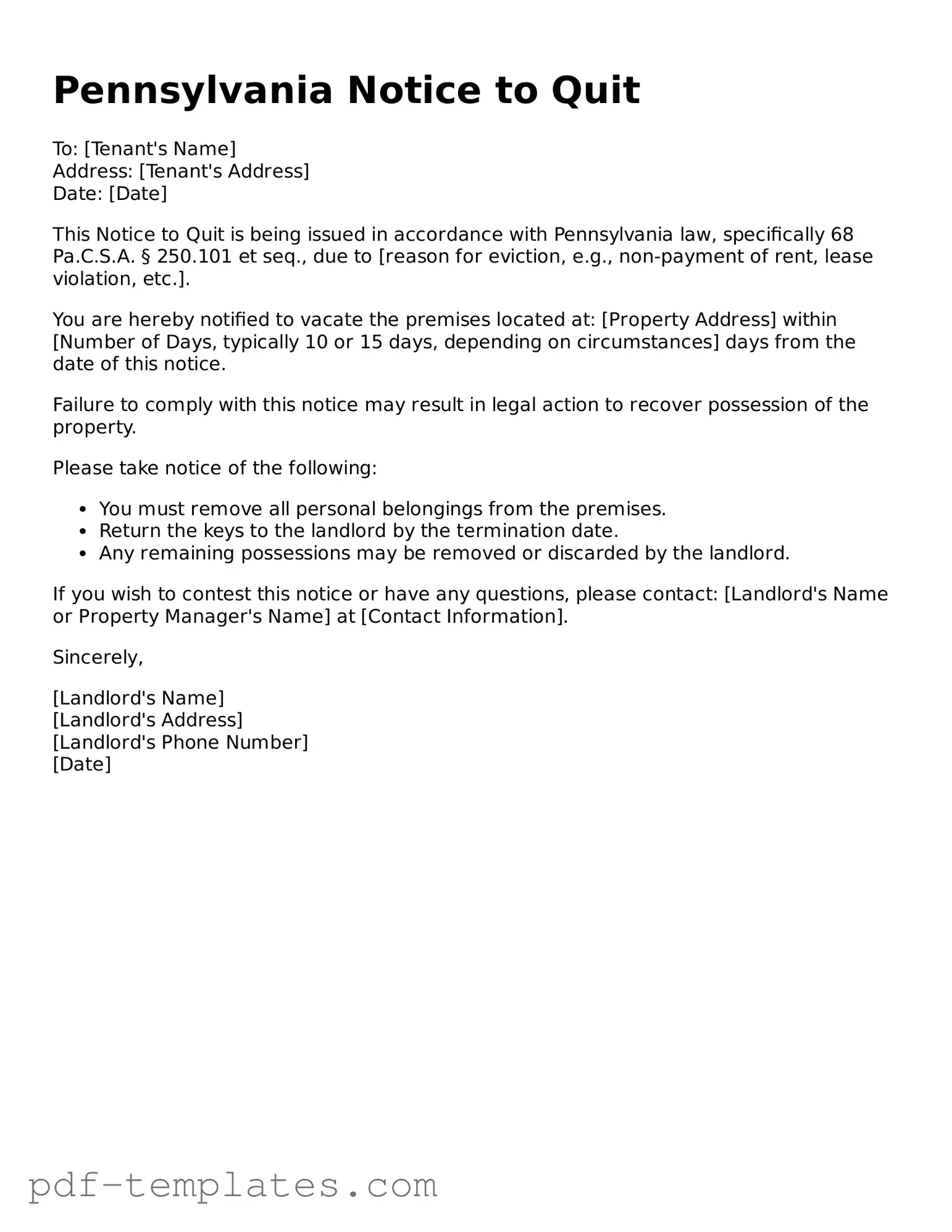The Pennsylvania Notice to Quit form is similar to the Eviction Notice used in many states. Both documents serve as a formal notification to tenants that they must vacate the rental property. The Eviction Notice typically outlines the reason for the eviction, such as non-payment of rent or lease violations, and specifies a time frame for the tenant to respond or leave. This urgency ensures that landlords can begin the legal process if tenants do not comply.
Another similar document is the Demand for Possession. This notice is often issued before initiating eviction proceedings and requires the tenant to either pay overdue rent or vacate the premises. Like the Notice to Quit, the Demand for Possession emphasizes the landlord's right to reclaim their property and provides a clear deadline for the tenant to take action.
The Three-Day Notice to Pay Rent or Quit is also comparable. This document is commonly used in various states to inform tenants that they have three days to pay overdue rent or face eviction. The urgency of this notice is critical for landlords seeking to resolve payment issues quickly. It clearly outlines the consequences of inaction, similar to the Notice to Quit.
The 30-Day Notice to Terminate Tenancy is another relevant document. This notice is often used in month-to-month rental agreements to inform tenants that their lease will not be renewed. While it may not always indicate a reason for termination, it provides the tenant with a clear timeframe to vacate, much like the Notice to Quit.
For those dealing with electronic device claims, understanding the nuances of necessary documentation is key, similar to how a tenant must navigate various notices in a rental agreement. The Asurion F-017-08 MEN form, specifically crafted for processing insurance claims related to electronics, plays a vital role in ensuring timely support for customers. To fill out this essential request for assistance, you can access the form directly at https://pdftemplates.info/asurion-f-017-08-men-form, ensuring a smooth claims process.
The Cure or Quit Notice is also similar. This document is issued when a tenant violates a lease term and gives them a chance to correct the issue or face eviction. Like the Notice to Quit, it details the specific violation and the timeframe for compliance, urging the tenant to act swiftly to avoid further legal action.
The Notice of Lease Violation is another document that shares similarities. This notice is used to inform tenants of specific breaches of the lease agreement, such as unauthorized pets or excessive noise. It serves as a warning and may lead to a Notice to Quit if the tenant does not rectify the situation within the given timeframe.
Lastly, the Notice of Default is comparable to the Pennsylvania Notice to Quit. This document is often used in mortgage situations but can apply to rental agreements as well. It notifies the tenant of a default on their obligations, such as failure to pay rent, and outlines the steps necessary to remedy the situation. The urgency in this notice is critical, as it can lead to further legal action if the tenant does not respond appropriately.
